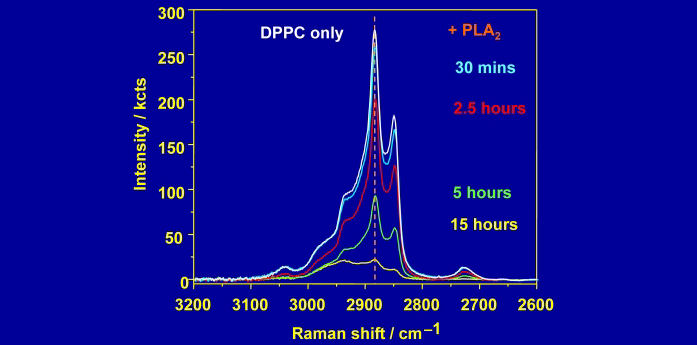Biophysical Projects
Research Topics: Biophysical Projects
Bilayer lipid membranes supported on flat solid surfaces are a useful model for processes occurring in the membranes of cells. One established method for forming planar supported lipid bilayers (pslb�s) is by fusion of small unilamellar vesicles from solution onto a polar support (e.g. silica). We are interested in developing new techniques for characterising pslb�s and for following the membrane processes involving membrane-bound peptides and proteins. We are also studying pslb�s on mesoporous silica supports, since these may provide a more natural environment for peptides, especially those with trans-membrane segments. Topics under study include:
- characterisation of lipid phase transitions by total internal reflection Raman scattering [1]
- interaction of the antimicrobial peptide, indolicidin, with membranes
- lipidolysis of pslb�s by phospholipase A2

In collaboration with the lead group of Dr. Vaux at the William Dunn School of Pathology at Oxford, we study the aggregation of fibrillogenic peptides and the role of the membrane in the cytotoxicity of these aggregates.[2]
References
1. C. Lee and C. D. Bain “Raman Spectra of Planar Supported Lipid Bilayers” Biochimica et Biophysica Acta, Biomembranes 2005, 1711, 59-71 (DOI).
2. M. G. Cottingham, M. S. Hollinshead and D. J. Vaux “Amyloid Fibril Formation by a Synthetic Peptide from a Region of Human Acetylcholinesterase that is Homologous to the Alzheimer’s Amyloid-Beta Peptide” Biochemistry, 2002, 41, 13539-13547 (DOI).
